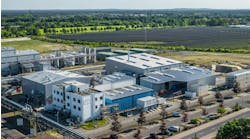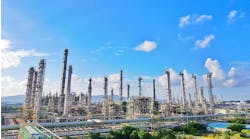Saving energy begins with a self-assessment. The first question a process engineer should ask is how the plant uses energy. Is it purchased from outside or derived internally from purchased raw materials? Effective energy conservation requires an all-around awareness of plant and plant personnel. Awareness begins from a self-assessment focused on areas that impact the energy cost of the process plant. Emphasis must be on sound operating practices, proper maintenance and inspection, good measurement and control capabilities and above all, motivating and training the personnel involved.
[pullquote]The following checklists may help you conduct a self-assessment on areas that might impact energy usage. These initial questions also may generate further questions. An in-depth self-assessment can lead to the appropriate solutions and actions required to reduce energy use. Here are several checklists to help determine energy improvements.
Process Area Checklist
• Is the product quality and its specific energy use maintained?
• Are optimum regeneration cycles in catalytic systems maintained?
• Are improvements in measurement of fuel and utility consumption needed?
• To what extent do operating procedures and instructions recognize energy conservation needs?
• To what extent do arbitrary constraints restrict or conflict with energy optimization needs? For example, fixing a turbine's speed, maintaining minimum pressure in a recirculating system, holding the temperature of a reboiler, hot oil stream, etc.
• Are leaks (of non-toxic process streams) from pump glands, valves, tanks and other fittings repaired as soon as they are reported?
• Are process vents and safety valves that discharge directly to the flare lines checked periodically?
• Are valuable process streams routed to fuel gas systems more frequently due to system design deficiencies? (Example: hydrogen, butane and propane downgraded to fuel gas.)
• Can low-pressure process offgases be routed to a nearby boiler instead of the flare line?
• Can barometric condensers be replaced with surface condensers?
Heat Exchanger System Checklist
• Are heat exchanger systems monitored to determine the optimum cleaning frequency?
• Have bypasses been provided to permit on-stream cleaning?
• Is the cooling-water flow rate controlled to minimize consumption?
• Can additional exchanger shells for existing exchanger systems be justified?
• Can waste heat in one unit be utilized to preheat process streams in a nearby unit, with options to run singly when necessary?
• Have variable-pitch fan blades for air fin coolers been considered?
• Is it possible to bypass intermediate storage to feed downstream units?
• Is it possible to recover low-level heat instead of dumping to the atmosphere or to the cooling tower water?
Fractionation Process Checklist
• Are reflux ratios set at a level at which the incremental fractionation improvement doesn't justify the additional energy input?
• Is stripping steam optimized?
• Can the preheating of feed stream be increased to minimize stripping steam use?
• Are feed distributors checked during shutdowns? A defective or poorly designed feed distributor can significantly reduce fractionation efficiency.
• Are columns operating at the lowest practical pressure to improve relative volatility and reduce the reflux ratio?
Storage and Handling Checklist
• Are rundown and storage temperatures optimized?
• Are heating needs for product blending minimized? Check the time taken to maintain the blending temperature and the number of mixers in service. Running two mixers may reduce blending time and heating needs.
• Is flaring kept under close control to avoid unnecessary flaring?
• Are all sources of gases to flare surveyed on a routine basis?
• Are coolers and condensers cleaned on a routine basis to avoid excess flaring during hot weather?
• Are volatile products stored in floating-roof tanks?
• Are the seals of floating-roof tanks maintained in good condition?
• Are the safety relief valves on floating-roof tanks inspected and tested regularly to insure proper functioning at the set pressure levels?
• Are rundown temperatures of volatile products controlled to avoid unnecessary vapor losses?
• Is the external paint for tanks containing volatile products selected to minimize solar heating to reduce vapor losses?
Self-assessment checklists covering utilities, measurement and control procedures that impact a plant's energy use will be discussed in Part II. Read it now.
VEN V. VENKATESAN is Chemical Processing's Energy Columnist. You can e-mail him at[email protected]

